experience

The Society of Stools [16]
Takeshi Ozu (JP), Aki Yamada (JP)
In many crowded urban places, such as train stations, you often find yourself in a weird situation: everyone around you is at your arms’ reach, yet they are strangers. *The Society of Stools [16]* is a flock of sixteen stools that move autonomously. The chairs escape and try to keep away from surrounding objects, including people. During this immersive experience, you may feel like you are one of them, or just feel isolated, since they are not willing to let you get closer.
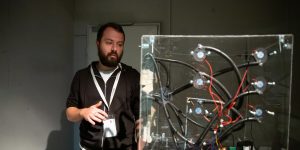
I Am Here
Dorin Cucicov (MD)
I Am Here is an interactive experience powered by human interaction. An ambiguous digital presence invites you to an exploratory dialogue. How well can you understand the entity and its intentions? Does the movement influence the digital form, or does the form dictate your movements? I Am Here explores the possibilities of outsourcing human personality to digital forms. It attempts to blur the differences between interhuman and human-computer interaction.
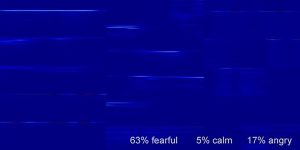
Sentientia
Dorin Cucicov (MD)
Sentientia attempts to reconstruct the experience of a sentient creature that learns to interact with the external world. Inspired by Dr. Frankenstein’s creature, Sentientia sends audio signals to its environment and waits for a response to establish an emotional connection. Emotional combinations are generated by the machine and transformed into sound. Once the system understands that it has a mind and is conscious of its surroundings, will it start looking for entities like itself to create social networks of emotional intelligence?
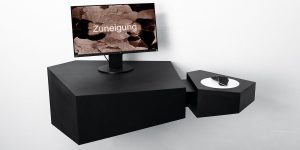
DEEP FEELING – An Interactive Utopia
Dominik Einfalt, Noah von Stietencron, Class of Graphic Design, Prof. Oliver Kartak (AT), University of Applied Arts Vienna (AT)
Deep Feeling lets artificial intelligence experience human affection to enable the growth of a social, feeling and loving AI. This prototype of a computer input device is equipped with sensors that transmit human touch to the AI.
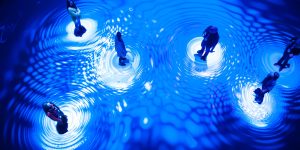
Quantum Logos
Mark Chavez (US), Ina Conradi (SG), Tate Chavez (US), Bianka Hofmann (DE), Bob Kastner (AU)
In an immersive reactive audio-visual experience, Quantum Logos uses cultural archetypes to explore natural phenomena focusing on the basics of quantum theory. We attempt to utilize aspects of intuitive, assumptive cultural models to describe the nature of existence as confirmed through scientific observation. The media artists Mark Chavez and Ina Conradi, sci-art producer and developer Bianka Hofmann and science communicator Bob Kastner form the collective Quantum Travelers
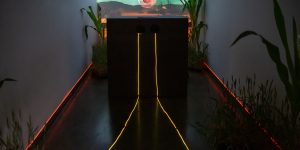
Navigating without a View
Maria Dada (UK), Yuan Yu Chen Feng (VE), Maria Bika (EL), Costas Kazantzis (EL), Greta Gandossi (IT), Ragnar Hrafnkelsson (IS), Fergus O’Connor (UK)
Navigating without a View is an immersive installation that investigates the possibilities of orientation in a world without a map or a compass, a world without representation and established views or truths. When guidance and direction become impossible everything falls back on the senses. But what becomes of the senses when they are altered by the digital, quantitative and mathematical?

Pig Simulator
Stephan Isermann (DE)
The Pig Simulator takes place in virtual reality but also in real space. The goal is to escape the slaughter in virtual reality – and, as in the real life of the real pig, this idea becomes futile. The user will live and die like a pig and experience the habitat of the animal as closely as possible through the virtual embodiment of an artificial and cruel habitat designed by humans to satisfy our desire for mass consumption of meat. The Pig Simulator may subvert common expectations about gaming and fights the dark irony of a just world of unequal life forms living in the shared habitat called Earth.
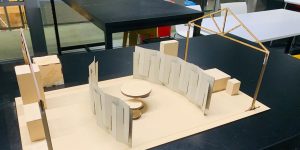
LIVING WALLS – Prototype Participatory Project
Hamish Banham (AU), James Dwyer (AU), Ruth Hawkins (AU), Kelly Hodge (AU), Tom He (CH), Peter Lloyd (AU/US), Thomas Long (AU), Steven O'Hanlon-Rose (AU), William Richardson-Davis (AU), Matthew Vosten (AU)
Living Walls aims to confront and explore the possibilities and challenges associated with future living in the form of a participatory exhibit. Through an audience as a participatory agent, Living Walls aims to explore the challenges and possibilities of living in a micro-home, and provides a space for the public to explore what is important and valuable for their future living situation.

Alternative sports viewing: Cross-modal appreciation of sports events
Junji Watanabe, NTT Communication Science Laboratories (JP)
Haptic communication technology and human information science can update inclusive sports viewing. By adding a haptic sensation to the viewing experience or converting a sports video into a haptic sensation, we present a novel form of sports viewing in which the spectators whether disabled or not, can enjoy a sports event with the vicarious excitement. Junji Watanabe attempts to re-create a sports viewing experience, which does not depend on visual or auditory stimuli, as conventional sports viewing does, and in which spectators can generate alternative reality of the event. Projects of “alternative sports viewing” are presented, achieved by adding or subtracting various sensations.


